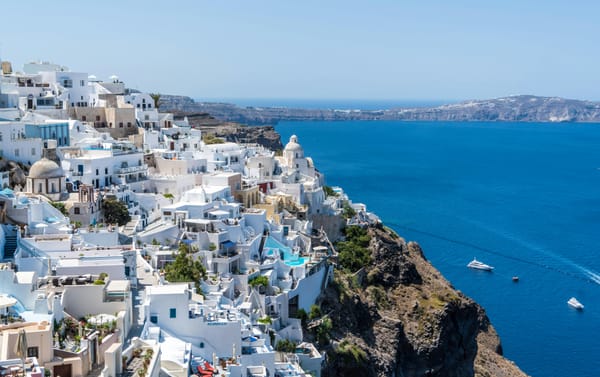Monday☕️

Economics & Markets:
- Yesterday’s U.S. stock market:
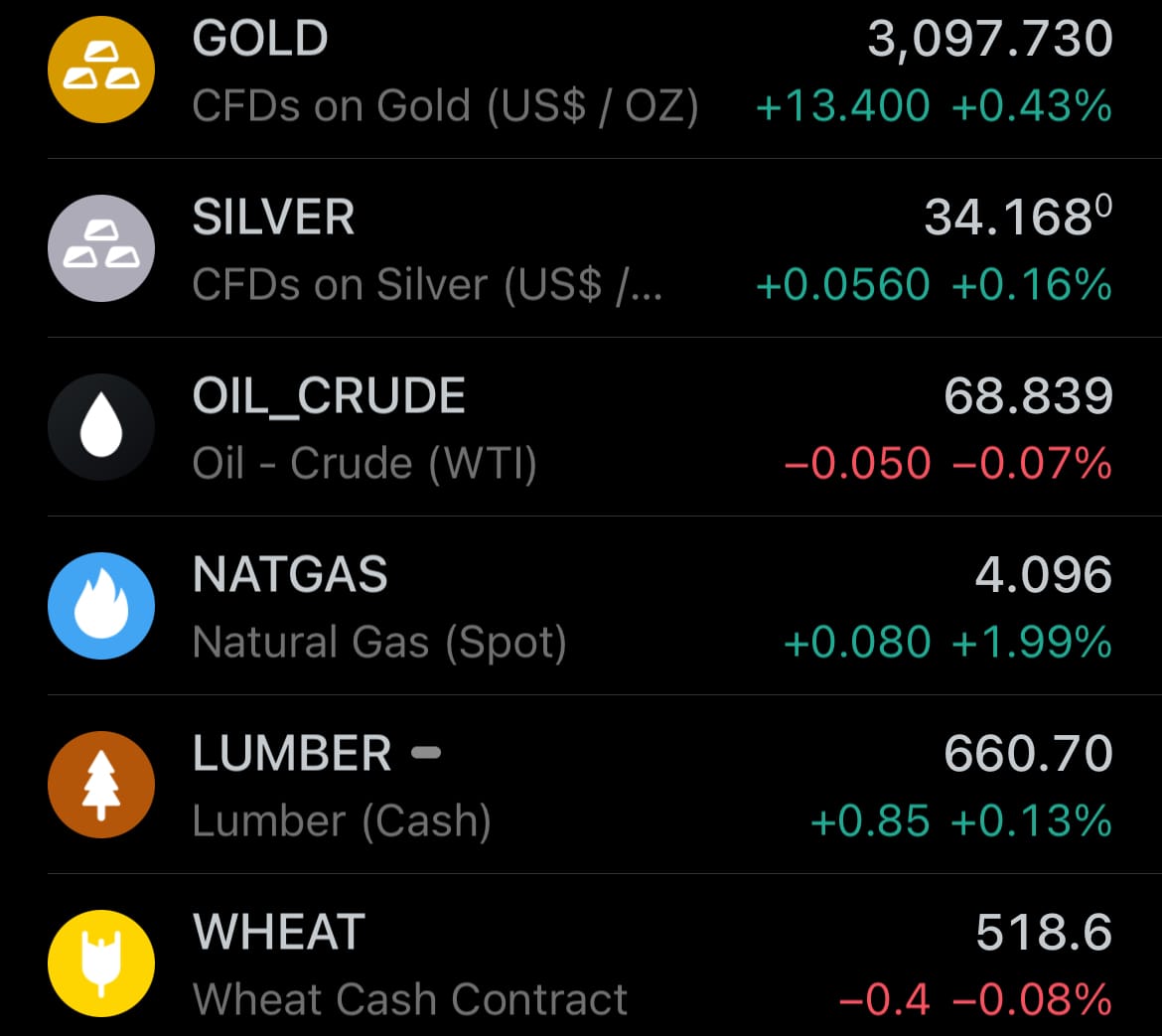
- Yesterday’s crypto market:
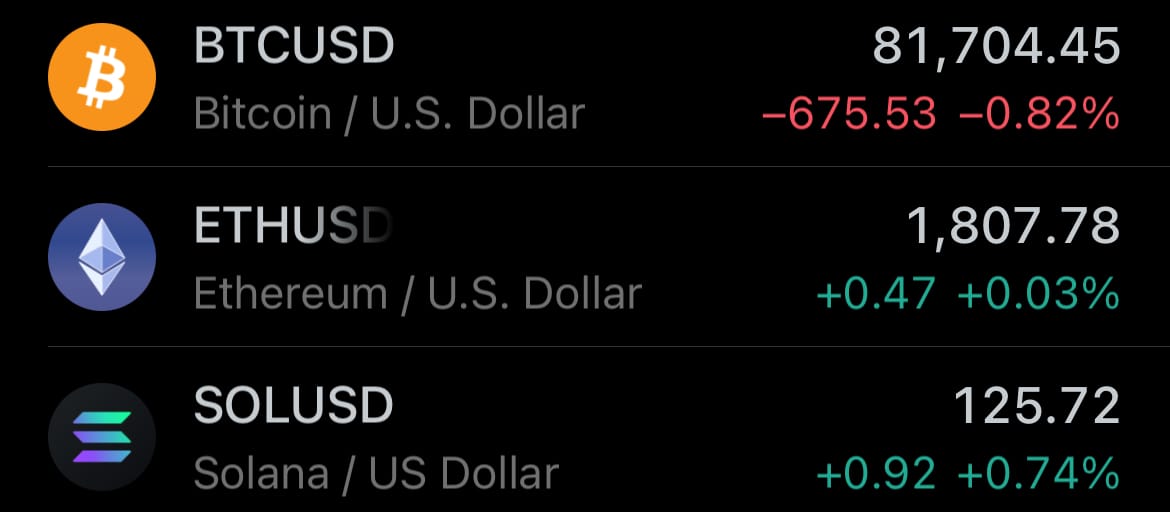
Geopolitics & Military Activity:
- As of Yesterday, March 30, 2025, the United States has bolstered its military presence in the Indian Ocean by deploying B-2 Spirit stealth bombers to the Diego Garcia base, a strategic British territory. This positions these nuclear-capable aircraft, each capable of carrying up to 25 tonnes of bombs, within striking distance of Yemen and Iran, while keeping them out of reach of Houthi drones or other regional threats. The move comes amid intensified U.S. airstrikes against Yemen’s Houthi rebels. Targeting Houthi strongholds like Sanaa, Saada, and Amran, these operations aim to disrupt the group’s attacks on Red Sea shipping and missile launches toward Israel.
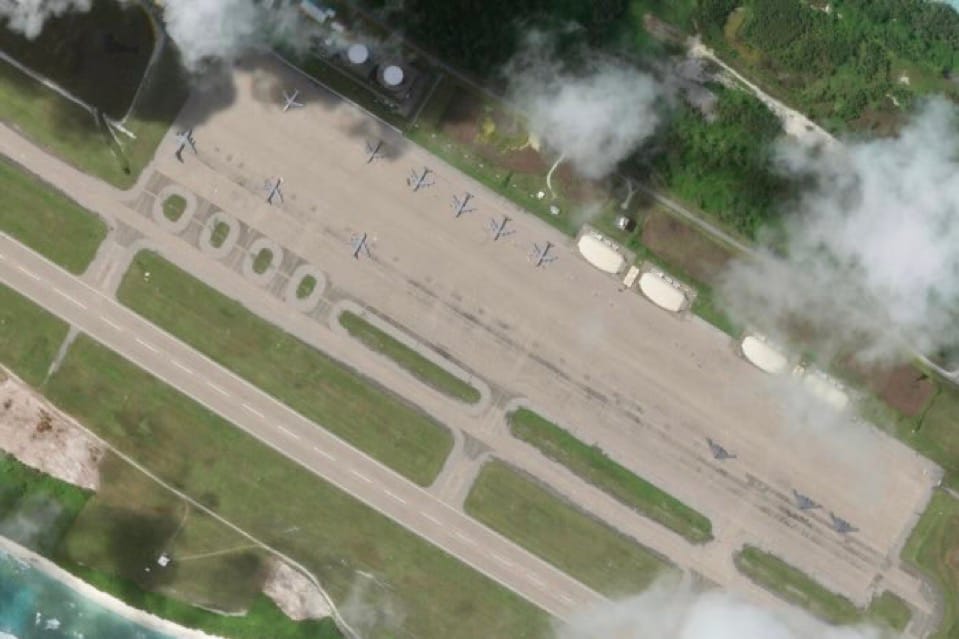
- At the same time, the U.S. is ramping up pressure on Iran over its nuclear program, with President Trump setting a two-month deadline for Tehran to negotiate a new deal, threatening military action if talks fail. This follows his 2018 withdrawal from the 2015 nuclear agreement and the reimposition of a "maximum pressure" campaign. While Iran has rejected direct talks, it remains open to indirect negotiations, though progress has been minimal. The B-2 deployment to Diego Garcia serves as both a deterrent to Iran and a response to the Houthi threat, signaling readiness for potential large-scale operations.
Environment & Weather:
- Yesterday, March 30, 2025, a magnitude 7.4 earthquake occurred near Tonga, around 62 miles northeast of Tongatapu, as reported by the U.S. Geological Survey (USGS). The quake struck around 1 AM local time within the Pacific Ring of Fire, a region known for frequent seismic activity. Following the event, the Pacific Tsunami Warning Center issued a tsunami warning for coastlines within 300 kilometers of the epicenter, prompting local authorities to activate sirens and advise residents to seek higher ground. Social media posts and local reports noted the event, with some describing minor shaking and objects falling from shelves.
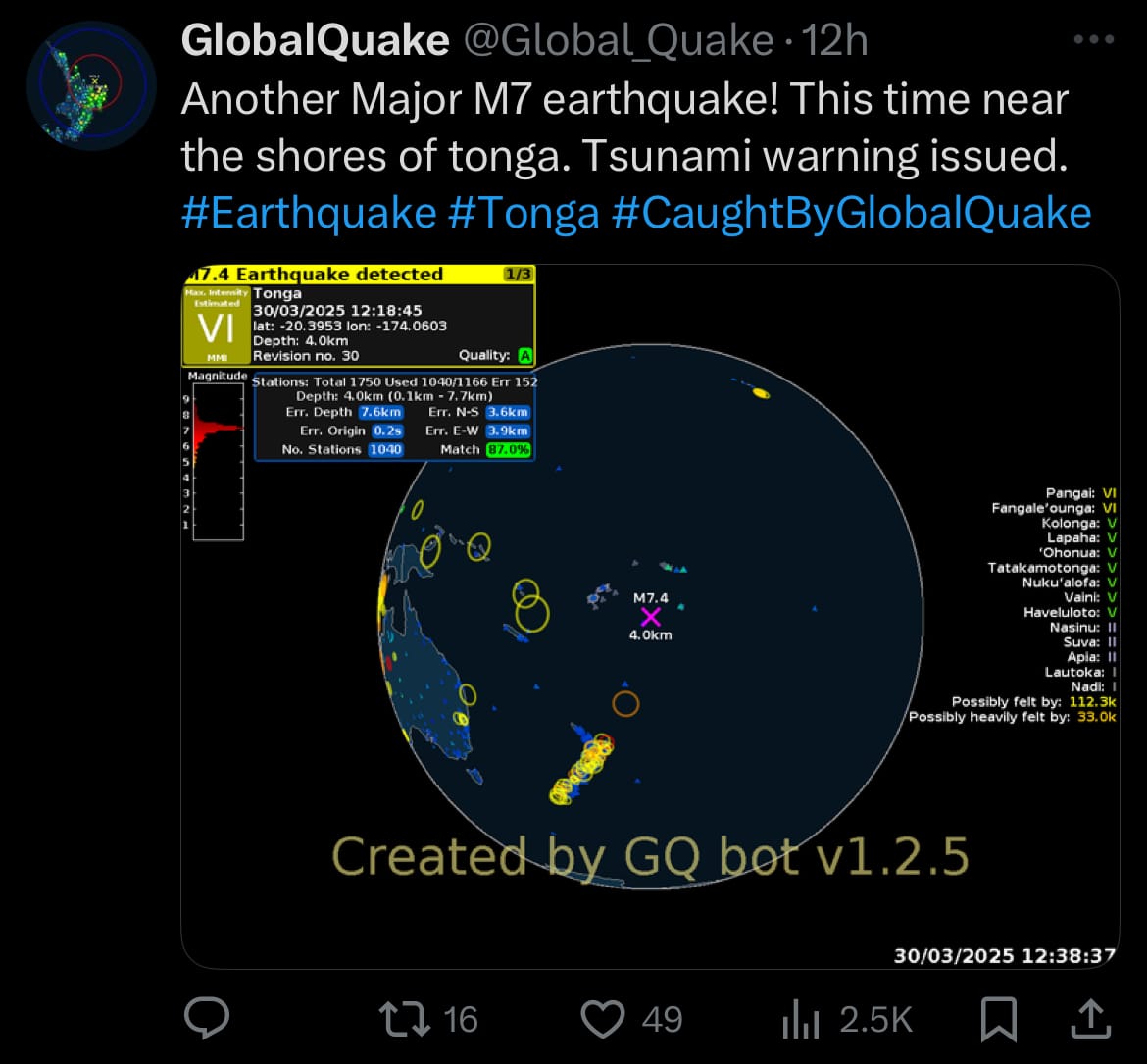
- The tsunami warning was canceled a few hours later after monitoring stations, including those operated by Tonga Meteorological Services and the USGS, detected no significant wave activity. Preliminary assessments indicate no widespread damage or casualties across Tonga’s islands, such as Tongatapu and Pangai, though data collection is ongoing. Tonga has experienced notable seismic events in the past, including a major tsunami in 2022 triggered by a volcanic eruption. This latest earthquake serves as a reminder of the region’s tectonic setting, though its immediate impact appears limited based on current information.

Space:
- Yesterday, March 30, 2025, Isar Aerospace, a German space company, conducted the launch of its Spectrum rocket from the Andøya Spaceport in Norway. The event was intended to be the first commercial orbital launch from continental Europe, excluding Russia. The rocket lifted off at 6:30 AM EDT (12:30 PM CEST), but seconds later, during its pitch-over maneuver—a step to adjust its path toward orbit—it lost control and fell back to Earth, exploding upon hitting the sea.
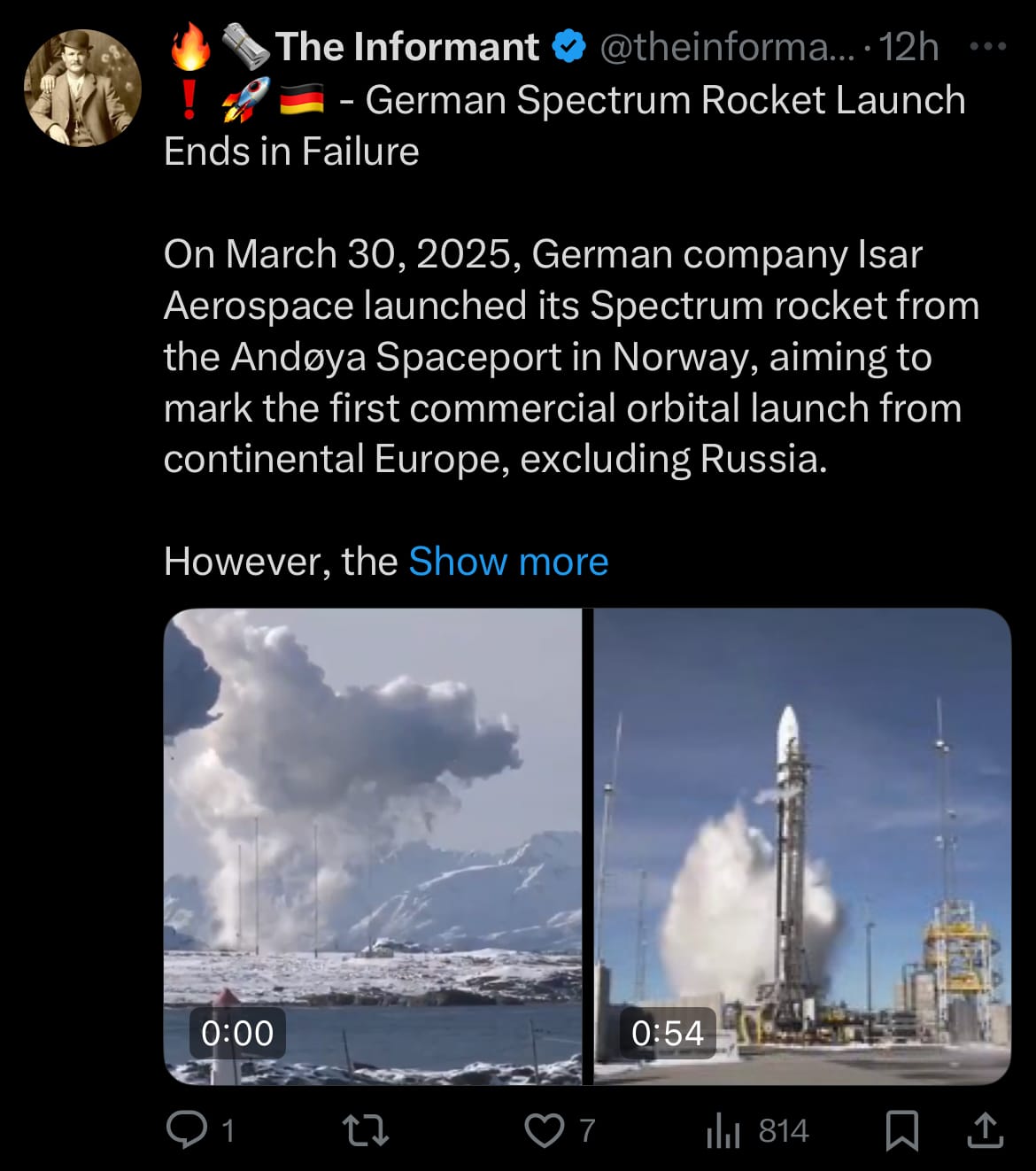
- The mission, called the "Going Full Spectrum" test flight, did not carry customer payloads and was focused on collecting data for future development. Isar Aerospace reported that the launchpad was undamaged, and no injuries occurred due to safety measures enforced by the company and the spaceport. Founded in 2018 and based in Munich, Isar Aerospace has been working to establish itself as a player in the European space industry, specializing in small satellite launch services. The company has attracted significant investment to support its goal of providing cost-effective and flexible access to space. The outcome of the launch provides information that may influence its next steps in the rocket program.
Statistic:
- Largest public construction companies by market capitalization:
- 🇫🇷 Vinci: $72.43B
- 🇮🇳 Larsen & Toubro: $56.09B
- 🇺🇸 D. R. Horton: $40.42B
- 🇪🇸 Ferrovial: $32.70B
- 🇨🇳 China State Construction Engineering: $30.70B
- 🇺🇸 Lennar: $29.93B
- 🇺🇸 NVR: $21.32B
- 🇯🇵 Daiwa House: $20.62B
- 🇺🇸 PulteGroup: $20.50B
- 🇨🇳 China Communications Construction: $18.24B
- 🇺🇸 Emcor: $16.86B
- 🇨🇳 China Railway Group: $16.23B
- 🇫🇷 Bouygues: $15.09B
- 🇪🇸 Grupo ACS: $14.74B
- 🇯🇵 Sekisui House: $14.54B
- 🇨🇳 China Railway Construction: $14.36B
- 🇩🇪 Hochtief: $13.40B
- 🇫🇷 Eiffage: $11.57B
- 🇺🇸 Toll Brothers: $10.44B
- 🇺🇸 Procore: $10.01B
- 🇹🇷 ENKA: $9.82B
- 🇯🇵 Kajima: $9.65B
- 🇯🇵 Obayashi: $9.50B
- 🇸🇪 Skanska: $9.33B
- 🇦🇹 Strabag: $8.40B
History:
- HVAC stands for Heating, Ventilation, and Air Conditioning—a system designed to regulate indoor environmental comfort by controlling temperature, humidity, and air quality. The roots of HVAC trace back thousands of years. Around 3000 BCE, Egyptians used wet reeds hung in windows to cool indoor air through evaporation. By 500 BCE, Persians had developed advanced passive cooling techniques using qanats (underground water channels) and badgirs (windcatchers). The Romans, by 100 BCE, pioneered the hypocaust system, which channeled heat beneath floors and behind walls to warm bathhouses and villas—an early form of radiant heating. In medieval Korea, the ondol system similarly used underfloor heating with flues carrying heat from wood fires. These early inventions laid the groundwork for understanding air movement, insulation, and thermal comfort.
- The modern HVAC era began with the Industrial Revolution, when advances in thermodynamics and mechanical engineering made powered climate control possible. In 1834, Jacob Perkins built the first functional vapor-compression refrigeration system, the foundation for modern air conditioning. In 1883, the first thermostat was developed. In 1902, Willis Carrier invented the first modern air conditioning unit to control humidity and temperature for a printing press in Brooklyn, New York—marking the birth of modern HVAC. In the 1920s, AC was introduced in movie theaters, making indoor comfort a public experience. In the 1930s, forced air systems and refrigerants like Freon (1930) accelerated HVAC development. By the 1950s, air conditioning became common in American homes and automobiles. Today’s systems emphasize energy efficiency, smart control, air quality, and sustainability, integrating with smart home ecosystems to meet modern demands for comfort.
Image of the day:

Thanks for reading!
Earth is complicated, we make it simple.
Click image to view the Earth Intelligence System:
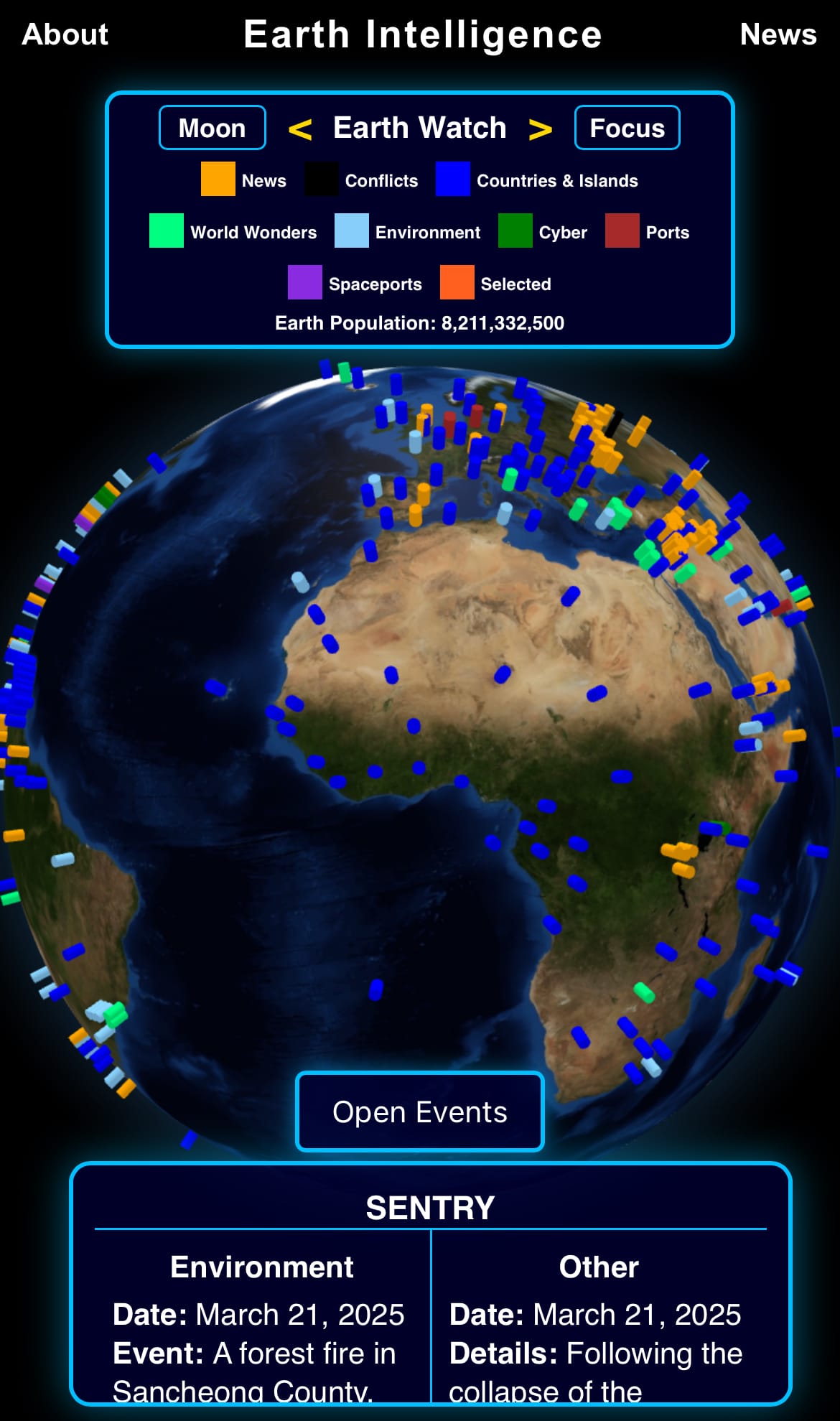


Support/Suggestions Email:
earthintelligence@earthintel.news




